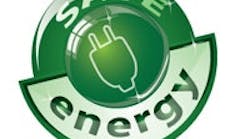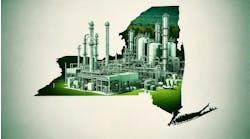Unlike other sectors such as steel, cement and paper processing, chemical plants vary in their process, undergo frequent process changes and face a more competitive market environment due to quick technological obsolescence. Hence, optimizing energy costs is critical for chemical plants. While individual processes may differ, many plants demand at least two or more of the following types of key energy services: process heating, process cooling, evaporation, distillation, electrolysis, refrigeration and electricity.
[pullquote]
Process Heating: Generally, low to moderate temperatures are required for process heating. Steam often plays a major role, as well as cascading or integration of thermal processes and cogeneration. High-temperature combustion gases could drive a turbine generating electricity, while moderate-temperature exhaust gases could produce steam to heat a reactor whose reaction products could pass through a heat exchanger to provide low-temperature heat for an incoming process. Other common measures like low excess air operation, improved heat recovery, efficient steam trap management, proper insulation and better housekeeping practices to minimize distribution losses could optimize energy use.
Process Cooling: Heat exchangers and cooling towers are the most common components of process cooling. Besides keeping heat exchangers clean and monitoring the quality of circulating cooling water, opportunities may exist in critical review of the cooling process itself. Identifying low-level heat utilization and process heat integration options could minimize both cooling and heating needs.
Evaporation: Concentrating a dilute solution by removing water or other solvents is a common process. Opt for multiple-effect evaporators or add other effects to existing evaporators to improve steam economy. Further improvements can be made by adding thermocompressors and improving the vacuum systems in the final effect.
Distillation: These columns separate components based on their different relative volatilities at different vapor pressure levels. A distillation column with multiple trays (or stages) maintains different vapor pressure levels by contacting rising vapors with the downcoming liquid mixture at each tray (or stage). New packing techniques and geometries offer better vapor/liquid contact at stages and favor selective separation of the desired compounds from the mixture. Increased computational capabilities, new quality monitoring sensors and online control features help improve the yields of desired products in the distillation process. In addition, conventional applications with better feed-preheating heat exchanger networks, desalters and pre-flash vessels also could improve energy efficiency.
Electrolysis: The most common application can be found in the chlor-alkali industry where electricity is considered a feedstock. In this industry, efficiency depends upon the voltage applied across the electrodes in the electrolytic cell, where the brine flows in between the electrodes. Newer membrane-type cells reduce this voltage closer to the theoretical levels of 2.18V compared to the old diaphragm cells. Another contributing factor for energy efficiency is the thermal energy needed to evaporate the caustic soda byproduct. Future development aims to improve the membrane process to withstand higher concentration of caustic soda, while maintaining a lower and uniform voltage difference across the cell's electrodes.
Refrigeration: Producing oxygen, nitrogen and other gases from air requires significant refrigeration. Also, manufacture of a number of chemicals extensively relies upon refrigeration to carry out certain reactions and product separations at below ambient temperatures. In the last two decades, most refrigeration systems underwent significant revamping to comply with global environmental regulations, and as a result efficiency levels improved. However, overall refrigeration system efficiency could benefit from additional improvements such as ambient level pre-cooling, better process control features and improved insulation practices.
Electricity: The most-used utility in any plant, electricity is required to move material and also is solely used for certain chemical processes, such as the conversion of carbon into graphite. In all these applications, a variety of techniques to improve electrical efficiency have been employed successfully in the past two decades.
One well-established technique applies variable frequency drives to pumps and fans. Better process controllers also offer significant energy savings. Replacing pneumatic conveyors with bucket conveyors to lift powders would consume significantly less electricity, and in most cases would more than compensate the additional maintenance cost.
It's possible to optimize all the above key energy services and maintain the same process output or production levels by identifying and minimizing controllable energy losses.
VEN V. VENKATESAN is Chemical Processing's Energy Columnist. You can e-mail him at vvenkatesan@putman.net



